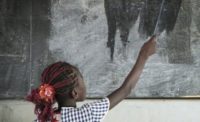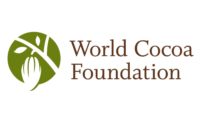Unfortunately, child labor is still a reality in today’s world.
Sadly, overall child labor has actually gone up in Ghana and Côte d’Ivoire, according to a new report from Tulane University, the 2013/14 Survey Research on Child Labor in West African Cocoa-Growing Areas.
The report looked at data from 2013/14, and compared it to data from the 2008/09 harvest season, with the results in both countries being impacted by strong growth in both cocoa production and population.
Findings reveal overall increases in child labor
Specifically, the report found that, in the aggregate, the number of children working in cocoa production, in child labor in cocoa production as well as doing hazardous work in cocoa production have increased from 2008/09 to 2013/14.
Specifically, in Côte d’Ivoire, the number of children working in cocoa production increased 59 percent. The number of children doing labor in cocoa production increased 48 percent. And the number of children doing hazardous work in cocoa production grew by 46 percent.
Also, the percentage of children in hazardous work in cocoa production increased to 30.9 percent, up from 22.3 percent.
However, in Ghana, the numbers of children working in cocoa production, doing child labor in cocoa production, and doing hazardous work in cocoa production all fell slightly, by less than 6 percent.
And, the percentage of children in hazardous work in cocoa production decreased to 39.3 percent, from 43.1 percent.
The good news is that overall, the percentage of children in hazardous work in cocoa exposed to multiple hazards decreased.
And, the percentage of children 5-17 years old attending school increased (amongst all children in agricultural households in the cocoa-growing areas and amongst children working in cocoa production).
Specifically, in Ghana, 96 percent of children in cocoa production attended school during the 2013/14 school year. And in Côte d'Ivoire, 71 percent of children in cocoa production attended school during the same period of time — a 12 percent increase since the data collection of 2008/09 — this despite the country’s educational infrastructure being damaged as a result of the 2010-2011 conflict over the presidential elections..
However, there’s still more work to be done.
Overall, the report concluded that after increases in the total number of children working in the cocoa sector in both countries combined, 1.5 million children still have to be removed from hazardous work by 2020 in order to reach the Framework of Action target.
And, with production growing and increasing global demand for cocoa beans, production methods and/or child labor mitigation strategies need to change drastically to achieve major progress.
“While we’re disappointed in the results of the Tulane survey, we’re not discouraged. Reducing child labor is a shared responsibility, and the industry remains committed to doing our part,” says Bill Guyton, president, WCF. “We’re accelerating our efforts and are hopeful CocoaAction — our sustainability strategy — plays a significant role in necessary reductions.”
Governments work to combat child labor
The governments of Ghana and Côte d'Ivoire have implemented several initiatives to address child labor.
In Ghana, the government has created the National Steering Committee on Child Labor, District Child Protection Committees coordinated by the Child Labor Unit, and the National Program for the Elimination of Worst Forms of Child Labor in Cocoa.
While the Ivorian government is moving quickly toward making education compulsory for children ages 6 to 16 for the first time, beginning September 2015. And, First Lady Dominique Ouattara has been a tireless champion for the children of Côte d'Ivoire, including her leadership role on the National Monitoring Committee for Actions to Fight against Trafficking, Exploitation and Child Labor (CNS).
WCF continues to combat child labor
The WCF and its members are also investing in a variety of formal and informal education initiatives. It is widely accepted that when access to education increases, child labor decreases.
It’s main program, CocoaAction — which was established in May 2014 by WCF, chocolate and cocoa companies, with consultation from Côte d'Ivoire’s and Ghana’s governments — aims to reach 1,200 cocoa-growing communities and 300,000 farms and their families in the years ahead.
CocoaAction's strength lies in combining community development and productivity with the intention of raising farm level incomes — an approach that's an important driver for change in cocoa-growing communities.
WCF believes five core interventions are needed to see dramatic reductions in child labor, including:
- Improving farmer incomes — especially considering the vast majority of cocoa in West Africa is grown on small, family-owned farms.
- Involving local communities in the effort, including awareness-raising and training of farmers and communities.
- Establishing child labor monitoring and remediation systems in the cocoa supply chain.
- Developing a more formalized adult labor market and improving labor efficiency in cocoa-growing communities that are reinforced by strong regulatory and legal systems.
- Expanding access to quality primary education for all children.
What does this look like in practice?
CocoaAction, existing WCF programs, other industry-led initiatives, and ICI-led interventions continue to address child labor in a variety of ways, including:
- Supporting education: Programs to support education activities in Côte d'Ivoire reach tens of thousands of children in cocoa-growing areas.
- Strengthening child protection: Programs to strengthen child protection in cocoa-growing communities, such as those implemented by ICI, whose work in more than 500 communities since 2007 has led to improved access to quality education for more than 50,000 children.
- Educating farmers: Organizing farmer field schools and increasing farmers' awareness about the risks and dangers of child labor.
- Encouraging safer use of agrochemicals: Training teams of professionals to safely apply agrochemicals to cocoa farms in areas where children have previously been involved in this task.
- Pesticide education: Within farmer field schools, demonstrating best practices regarding pesticide spraying, reaching 24 cooperatives and 11,000 farmers.
- Wooden mallet training: Training cocoa farmers to open cocoa pods with wooden mallets rather than machetes, a practice that is not only safer for the farmer but improves cocoa quality and yields.
- Certifying farmers: Helping to train and certify nearly 400,000 farmers in Côte d'Ivoire and Ghana. External studies show that children of certified farmers attend school 30 percent more than children of farmers who are not certified.
- Child Labor awareness sessions: Leading informational child labor awareness sessions, which, in 2014 alone, were attended by more than 12,000 farmers and 35,000 community members.
“Child labor monitoring and remediation is a key focus area of the community development pillar,” says Guyton. “Simply put, a poorly educated cocoa community will not produce the farmers of the future capable of adapting to changes in the marketplace and adoption of modern farming techniques. A failure to sustain this labor-intensive agricultural product threatens the ability for the cocoa industry to thrive and cocoa customers to enjoy the product.”
And, for the average consumer looking to help, Guyton suggests to learn more about the topic, and encourages, “visiting the World Cocoa Foundation website on a regular basis for updates, subscribing to the WCF e-newsletter, and reading CocoaAction progress reports as they’re released.”




